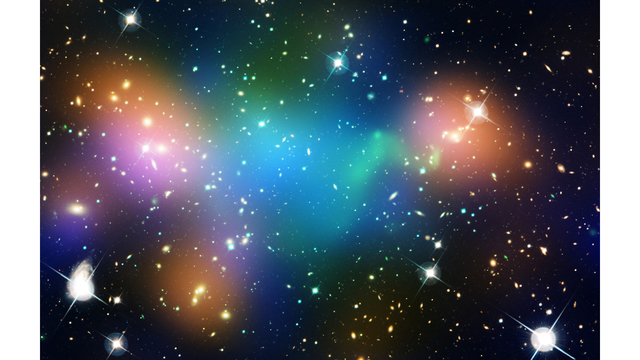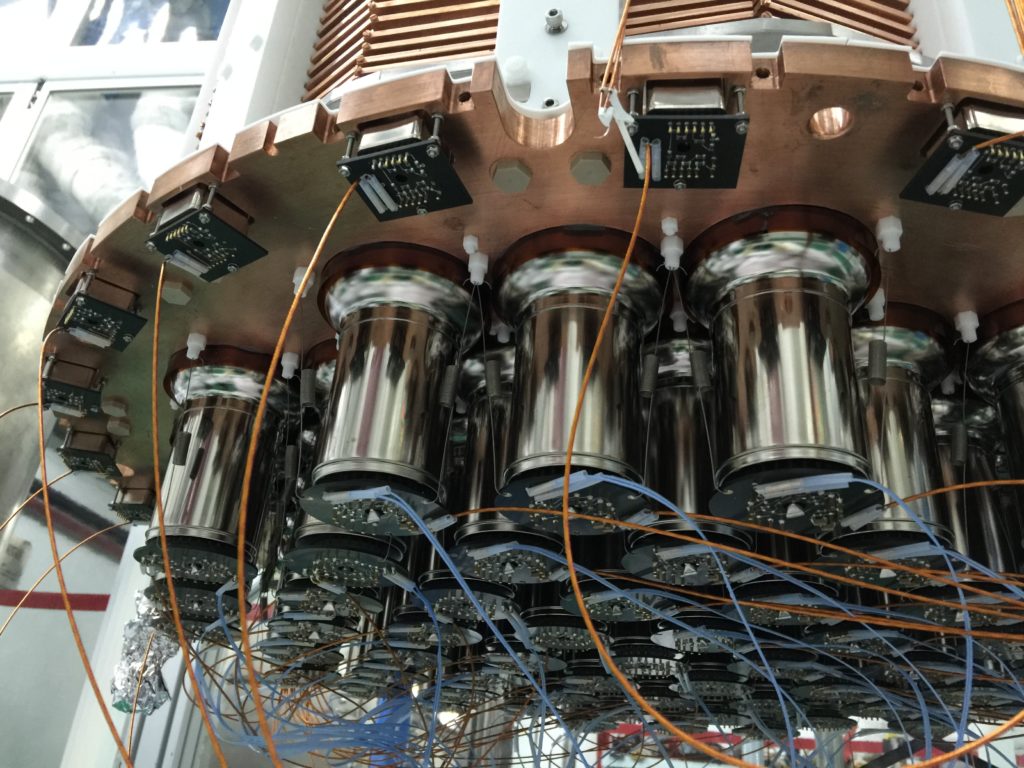
The discovery of a dark matter particle interacting with ordinary matter is one of the holy grails of modern physics and represents the best hope to understand the fundamental, particle properties of dark matter
Dark matter — nonluminous material in space — is understood to constitute 85 percent of the matter in the universe. Unlike normal matter, it does not absorb, reflect, or emit light, making it difficult to detect.
Physicists are certain dark matter exists, having inferred this existence from the gravitational effect dark matter has on visible matter. What they are less certain of is how dark matter interacts with ordinary matter — or even if it does.
I’m a theoretical physicist at the University of California, Riverside, who recently joined forces with Team PandaX-II, an international team that has imposed conditions on how dark matter may interact with ordinary matter — constraints that can help identify the elusive dark matter particle and detect it on Earth.
In a recent issue of Physical Review Letters we report the strongest limit on the interaction strength between dark matter and visible matter with a “light mediator,” which is a particle whose mass is very small. The journal selected our paper as a highlight, a significant honor.
In the search for direct detection of dark matter, the experimental focus has been on WIMPs, or weakly interacting massive particles, the hypothetical particles thought to make up dark matter.
Team PandaX-II invokes a different theory to challenge the WIMP paradigm: the self-interacting dark matter model, or SIDM, a well-motivated framework that can explain the full range of diversity observed in the galactic rotation curves.
Along with Yong Yang, an experimentalist at Shanghai Jiaotong University in China, I co-led Team PandaX-II in analyzing and interpreting the latest data collected in 2016 and 2017 at PandaX-II, a xenon-based dark matter direct detection experiment in China (PandaX refers to Particle and Astrophysical Xenon Detector; PandaX-II refers to the experiment). Should a dark matter particle collide with PandaX-II’s liquefied xenon, the result would be two signals: one of photons and the other of electrons.

The Particle and Astrophysical Xenon Detector, or PandaX, is a dark matter detection experiment at China Jinping Underground Laboratory (CJPL) in Sichuan, China. The experiment occupies the deepest underground laboratory in the world, and is among the largest of its kind.
Located at the China Jinping Underground Laboratory, Sichuan Province, where pandas are abundant, PandaX-II is the deepest underground laboratory in the world. It had generated the largest dataset for dark matter detection at the time we performed the analysis. One of only three xenon-based dark matter direct detection experiments in the world, PandaX-II is one of the frontier facilities to search for extremely rare events where scientists hope to observe a dark matter particle interacting with ordinary matter and thus better understand the fundamental particle properties of dark matter.
I should point out that PandaX-II assumes dark matter “talks to” normal matter — that is, interacts with protons and neutrons — by means other than gravitational interaction (just gravitational interaction is not enough). Our goal was to search for a signal that identifies this interaction. The PandaX-II collaboration assumes the “mediator particle,” which mediates interactions between dark matter and normal matter, has far less mass than the mediator particle in the WIMP paradigm.
What difference does this make? Well, the WIMP paradigm assumes this mediator particle is very heavy — 100 to 1000 times the mass of a proton — or about the mass of the dark matter particle. This is a paradigm that has dominated the field for more than 30 years. In astrophysical observations, we don’t, however, see all its predictions. The SIDM model, on the other hand, assumes the mediator particle is about 0.001 times the mass of the dark matter particle, inferred from astrophysical observations from dwarf galaxies to galaxy clusters. The presence of such a light mediator could lead to smoking-gun signatures of SIDM in dark matter direct detection, as we suggested in an earlier theory paper. Now, we believe PandaX-II, one of the world’s most sensitive direct detection experiments, is poised to validate the SIDM model when a dark matter particle is detected.
Our study highlights the complementary ways in which very different experiments are needed to search for dark matter. It also shows why theoretical physics plays a critical role to translate between these different kinds of searches. It interprets new experimental data in terms of a framework that makes it easy to connect to other types of experiments, especially astrophysical observations, and a much broader range of theories.
It’s important to note that particle physicists’ attempts to understand dark matter have yet to yield definitive evidence for dark matter in the lab. For the past decade, I have made the effort to bridge particle physics and astrophysics by looking for ways to understand dark matter’s particle properties from astrophysical data. My collaborators and I discovered a class of dark matter theories with a new dark force that may explain unexpected features seen in the systems across a wide range, from dwarf galaxies to galaxy clusters. This new SIDM framework serves as a crutch for particle physicists to convert astronomical data into particle physics parameters of dark matter models.
Now with the PandaX-II experimental collaboration, we have shown how self-interacting dark matter theories may be distinguished at the PandaX-II experiment. Prior to this line of work, these types of laboratory-based dark matter experiments primarily focused on dark matter candidates that did not have self-interactions.
This is the first direct detection result for SIDM reported by an experimental collaboration. With more data, we will continue to probe the dark matter interactions with a light mediator and the self-interacting nature of dark matter.
We expect the PandaX experiment to further increase its measurement sensitivity in the next few years. Exciting times lie ahead!
About the Author
 Hai-Bo Yu, a dark matter expert, is an assistant professor of physics and astronomy at the University of California, Riverside.
Hai-Bo Yu, a dark matter expert, is an assistant professor of physics and astronomy at the University of California, Riverside.


